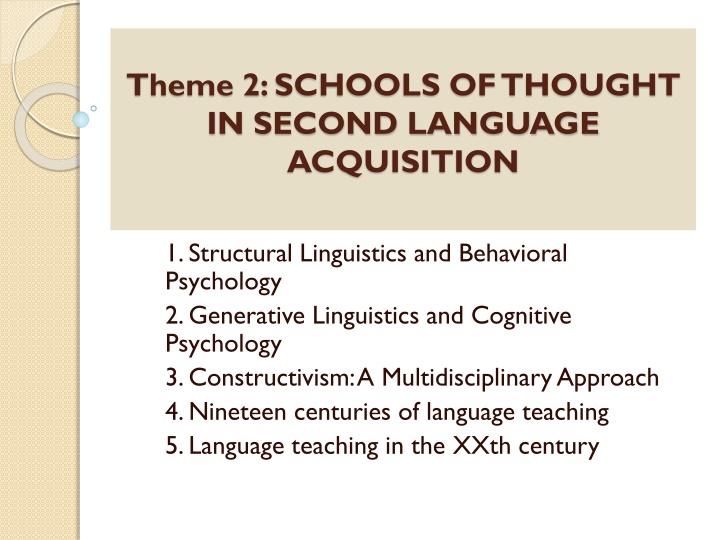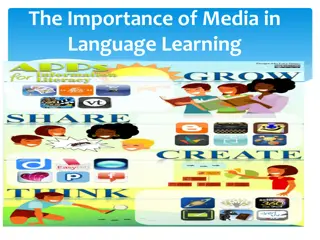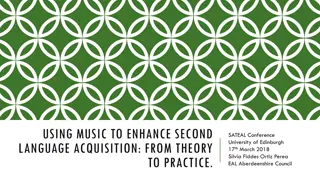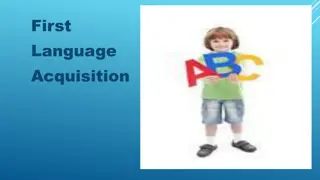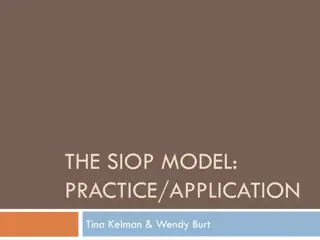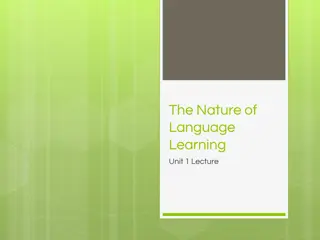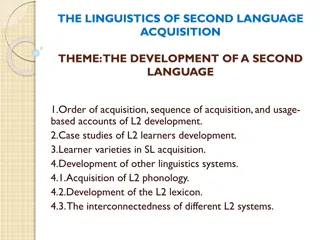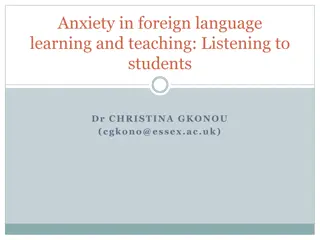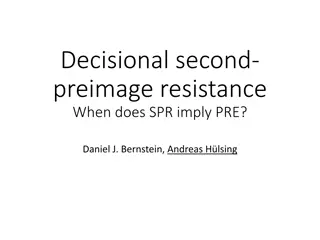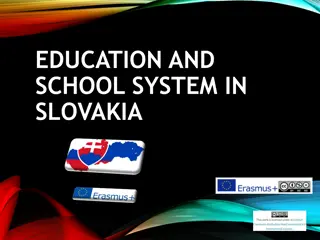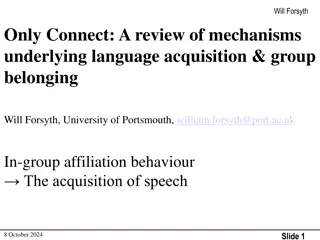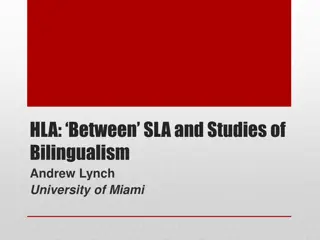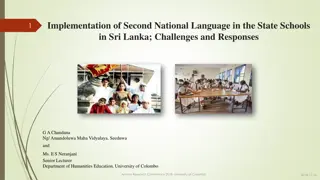Schools of Thought in Second Language Acquisition
Delve into the realms of structural linguistics, behavioral psychology, generative linguistics, cognitive psychology, constructivism, and traditional language teaching approaches. Explore diverse perspectives shaping the field of second language acquisition.
Download Presentation

Please find below an Image/Link to download the presentation.
The content on the website is provided AS IS for your information and personal use only. It may not be sold, licensed, or shared on other websites without obtaining consent from the author.If you encounter any issues during the download, it is possible that the publisher has removed the file from their server.
You are allowed to download the files provided on this website for personal or commercial use, subject to the condition that they are used lawfully. All files are the property of their respective owners.
The content on the website is provided AS IS for your information and personal use only. It may not be sold, licensed, or shared on other websites without obtaining consent from the author.
E N D
Presentation Transcript
Theme 2: SCHOOLS OF THOUGHT IN SECOND LANGUAGE ACQUISITION 1. Structural Linguistics and Behavioral Psychology 2. Generative Linguistics and Cognitive Psychology 3. Constructivism: A Multidisciplinary Approach 4. Nineteen centuries of language teaching 5. Language teaching in the XXth century
Key terms: Structural linguistics Behaviourism Generative linguistics Cognitivism Constructivism Parole vs Langue
Schools of thought in linguistics and psychology 1. Structural Linguistics and Behavioral Psychology 1940s-1950s structural, or descriptive school of linguistics Leonard Bloomfield, Edward Sapir, Charles Hockett, Charles Fries application of scientific observations of human languages. only "publicly observable responses" subject to investigation.
Structural linguistics (continued) The linguist's task - describe human languages and to identify the structural characteristics of those languages. Structural linguists examined only overtly observable data. important - language could be divided into small pieces or units and these units could be described scientifically. detailed descriptions of "exotic" languages.
CLASSROOM CONNECTIONS Research Findings: The prevailing paradigm in linguistic research in the 1940s and 1950s viewed language as a linear, structured system that described grammatical sequences in terms of separate components that could comprise a sentence. Teaching Implications: Charles Fries described "structural drills" and "pattern practices" in (1945) Teaching and Learning English as a Foreign Language and (1952)The Structure of English. Audiolingual Method drew many insights from Fries's seminal work. What do you think are the advantages and disadvantages of pattern drills in the language classroom?
Behavioral Psychology focused on publicly observable responses those that can be objectively recorded, and measured. scientific method only! concepts of consciousness and intuition were not used. states of consciousness, thinking, acquisition of knowledge were not examined. Experiments: Pavlov's dog
2. Generative Linguistics and Cognitive Psychology 1960s - generative-transformational linguistics Noam Chomsky and his followers. human language cannot be scrutinized simply in terms of observable stimuli and responses or the volumes of raw data. interest not only in describing language (descriptive adequacy) but also in arriving at an explanatory level of adequacy in the study of language.
Beginnings of generative- transformational revolution Ferdinand de Saussure (1916) there is a difference between parole (what Skinner "observes , Chomsky s performance), and langue (language ability, Chomsky s competence). descriptive linguists ignore langue and study parole.
Cognitive psychology meaning, understanding, and knowing are significant. sought to discover motivations and deeper structures of human behavior by using a rational approach. freed themselves from the strictly empirical study typical of behaviorists. used logic, reason, inference in order to explain human behavior (not only what? but also WHY? ).
3. Constructivism end of XXth cent. branches of constructivism: cognitive and social Cognitive (Piaget (1954, 1955, 1970): emphasis is placed on the importance of learners constructing their own representation of reality. "Learners must individually discover and transform complex information if they are to make it their own, [suggesting] a more active role for students in their own learning than is typical in many classrooms" (Siavin, 2003. pp. 257-258). for Piaget learning is a developmental process that involves change, self-generation, and construction, each building on prior learning experiences.
Social constructivism emphasizes the importance of social interaction and cooperative learning in constructing knowledge, personal meaning. Vygotsky (1978)- children's thinking and meaning-making is socially constructed and emerges out of their social interactions with their environment
CLASSROOM CONNECTIONS Research Findings: Constructivism is a school of thought that emphasizes both the learner's role in constructing meaning out of available linguistic input and the importance of social interaction in creating a new linguistic system. Early constructivists like Vygotsky and Piaget actively emphasized their views many decades ago. What took the language teaching profession so long to apply such thinking to classroom practices? Teaching Implications: in the 1970s, some methods advocated the central role of the learner's construction of language (the Silent Way and Community Language Learning) and the importance of meaningful interaction (early forms of the Notional-Functional Syllabus, which started in the United Kingdom). What evidence of constructivism do you see in current foreign language classrooms?
Zone of proximal development Vygotsky zone of proximal development (ZPD) - distance between learners' existing developmental state and their potential development. ZPD describes tasks that a learner has not yet learned but is capable of learning with appropriate stimuli. The ZPD describes tasks that a child cannot yet do alone but could do with the assistance of more competent peers or adults.
4. Nineteen centuries of language teaching "foreign" language learning = learning of Latin or Greek. Latin promotes intellectuality through "mental gymnastics ; indispensable to higher education. was taught by means of Classical Method - focus on grammatical rules, memorization of vocabulary, declensions, translation of texts. No teaching of speaking. Used for centuries Classical Method was adopted for teaching other foreign languages. languages were learnt for the sake of being "scholarly" or for gaining a reading proficiency.
Grammar Translation Approach Late 19th c. - the Classical Method comes to be known as the Grammar Translation Method. Very enduring - it remains a standard methodology for FLT among many competing models. Convenient a method for which there is no theory.
5. Language teaching in the XXth century XXth c. search for "best" method methods come and go new method takes with it positive aspects of the old method cyclical nature of methods eclecticism, absence of "best" method
